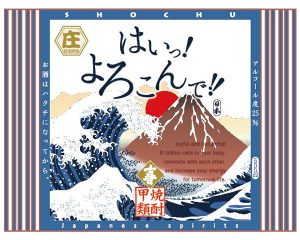If you have a different boss, what do you deal with them in Japan?
CONTENTS
- How to Deal with a Japanese Boss?
- Recruited from a Competitor During the Company Expansion
- The Economic Downturn
- The New President from Headquarters
- Each New President Brings His Own Management Style
- Typical Localization Pattern for Japan-related Businesses in the US
- Localization Is Not a Straight-line Trajectory
- Look at the Big Picture
- Dealing with Closer Management
How to Deal with a Japanese Boss?
By Patricia Pringle
Recruited from a Competitor During the Company Expansion
Joe McDonald is a vice president at a United States subsidiary of a large Japanese company. He has been with the company for three years. He was recruited from a major competitor, where he had worked for 15 years. His experience in the industry made him a valuable part of the executive team during the Japanese company's recent period of expansion in the US market. All of the other executives are Americans. They reported to Ito, the president, who was Japanese, with whom they had a good working relationship. Ito respected their knowledge and experience, let them run their divisions, and was willing to go to bat for them when decisions were made in Japan.
The Economic Downturn
The numbers weren't very good in the last quarter. Consumers had changed their spending habits due to the general economic downturn. The company’s product contained a number of key components that were sourced in Japan. The unfavorable exchange rate made it difficult to compete on price. Joe, the other American executives, and Ito did everything they could to mitigate these factors, but still they failed to meet the company's sales targets.
The New President from Headquarters
A month ago, Ito told Joe that he was going back to Japan, and he would be replaced by Suzuki, who came from headquarters and not the product division. Joe had never met Suzuki before. Ito said he knew Suzuki by sight but had never worked with him. Ito said that Suzuki would support Joe and the others with their work.
When Suzuki arrived, it was clear that while he knew a lot about the industry in Japan, he knew almost nothing about US products or the US marketplace. He also did not seem to know anything about Joe's background, job responsibilities or track record. Suzuki seemed to be spending a lot of his time, and Joe's time, asking Joe elementary questions about his work, and poring over his spreadsheets. In contrast to Ito's hands-off management style, Joe could not make the simplest decision without first consulting with Suzuki, and going over the whole thing in excruciating detail. In addition, there seemed to be a lot more Japanese from headquarters coming through the office on business. Joe wondered, "Who is this Suzuki guy? Why do we get someone from headquarters and not someone from our product division, who knows us and knows the business? I don't need him ‘helping’ me with my work! Is Suzuki going to take away all of my authority? What is going on here?”
Each New President Brings His Own Management Style
Soon after Suzuki arrived, Joe complained to Bill Smith, the controller, about the sudden change in management style. Bill had been with the company for over 10 years, and been through a number of changes in administration. Bill explained, "Every president brings his own management style. Just when we've gotten used to a top-down president, the next president has a more laissez-faire style. Right after I started working here, Nagano came in. He was shocked that we each had our own cubicle, and ordered all the cubicles taken down so that we could be in an open plan office just like in Japan and he could keep his eye on us. The next guy, Honda, looked at the floor plan and said there was no privacy, so how could Americans work productively, and had the cubicles put back up!”
Typical Localization Pattern for Japan-related Businesses in the US
Japanese companies have been establishing businesses in the United States for several decades now. At the beginning, they used expatriates from Japan to start up and manage the business. The Japanese managers made all of the executive decisions, and the local employees performed the work. Once the business was more established, the companies began to promote US employees from the inside, or recruit managers from other companies. The number of Americans in management positions increased, and the number of Japanese managers decreased, particularly after the end of the Japanese economic bubble, when Japanese companies trimmed costs by reducing the numbers of expatriates in the US. Some companies began to look just like American companies. They had Americans in top positions with significant decision-making authority. Joe's company fit this pattern. It was well established in the US by the time Joe came on as vice president. Business was booming and the company was expanding. President Ito and headquarters were comfortable with leveraging the knowledge and experience of American executives, and letting them manage in the American style, without the close contact, collaboration, and reporting that is more typical in a Japanese company.
Localization Is Not a Straight-line Trajectory
While the typical pattern is for American managers to have greater authority the longer the company has been in the US, the localization of a Japanese company abroad is never a straight line trajectory. It is more like a dynamically changing wave. Local authority fluctuates according to a number of different circumstances, but in general headquarters exerts more control in difficult business environments.
Look at the Big Picture
Joe's biggest concern was that the Japanese company might withdraw from the US market because their products had not done well in the past two quarters. To check out his concern, he invited Suzuki to have dinner with him, to find out more about him and the current situation in the company. Suzuki explained that, yes, the company was disappointed at the recent poor performance, but staying in the US market was critical to the long-range strategy of the entire company, not just their particular product family. Key technology that was currently being developed for their products would later be implemented in other product areas. This would make the company a front runner in cutting-edge products years down the road. Headquarters was very interested in the health and performance of this subsidiary. They replaced Ito with Suzuki, who was more senior. Yes, he did have a more intense management style, but he had a track record of turning around subsidiaries in Asia.
Dealing with Closer Management
Try not to jump to conclusions about the direction of the company. Make time to speak informally with the expatriates, and let them know you are interested in learning the big picture and the long-range plans for the company. Learn to adapt to the new collaborative style, by keeping in closer contact with the Japanese expatriates and providing the required reports, data, and explanations. Make sure that subordinates also understand what is expected. And lastly, be aware that when the Japanese company assigns valuable executives from headquarters to manage a foreign subsidiary, it generally means a focus on a business of strategic importance.


